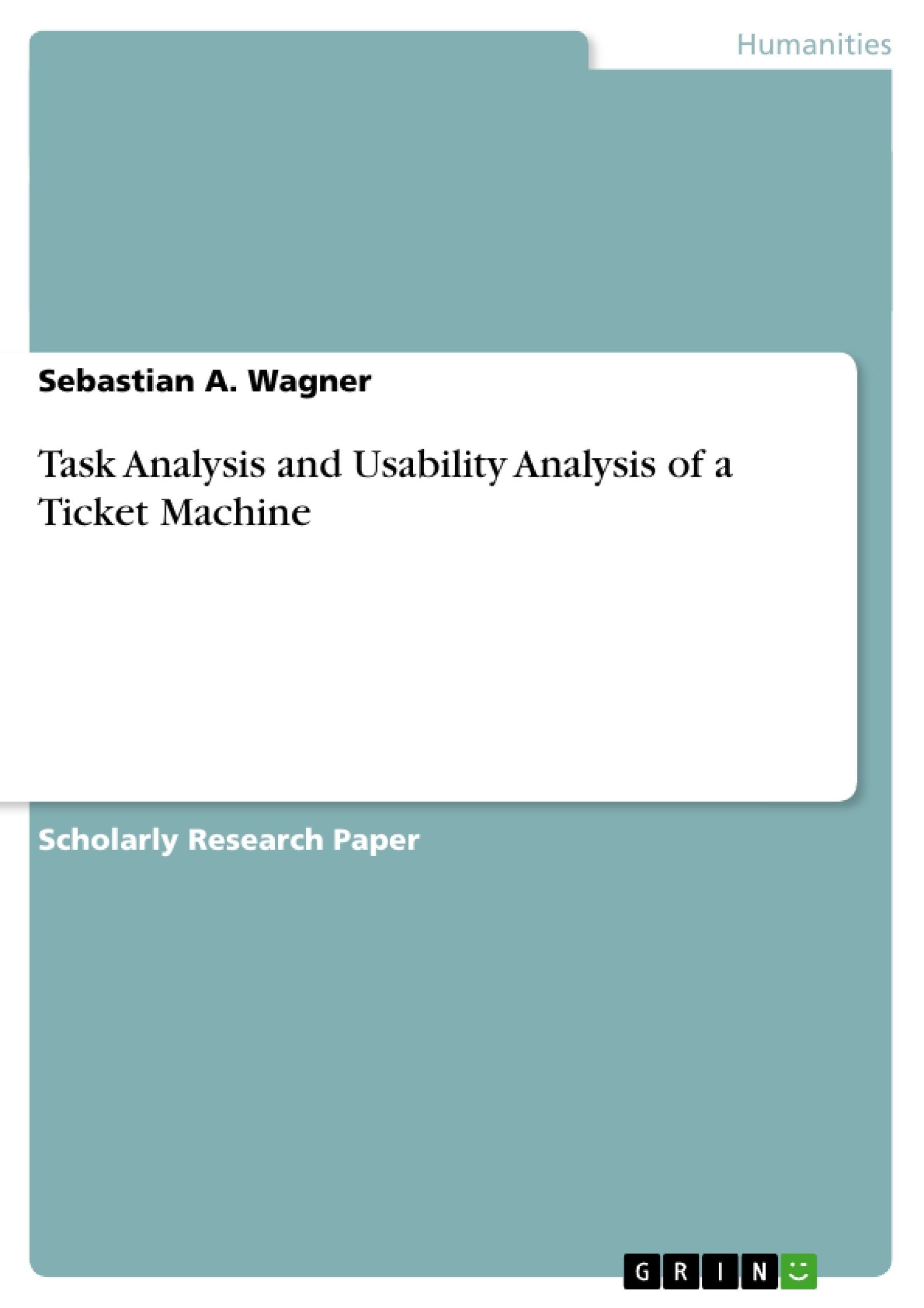This report examines the car park ticket machine (TM). The Hierarchical Task Analysis (HTA; Sheperd, 2000; cited in Mills, 2007) is used as a framework: Firstly, psychological issues related to using the TM are discussed. Secondly, an usability analysis of the TM is
conducted, whereupon principles of usability (Jordan, 1998) are applied. The result is that the design has major issues. Subsequently, an improved design is sketched out – considering identified issues. Finally, an evaluation method for the redesign is introduced.
Inhaltsverzeichnis (Table of Contents)
- Introduction
- Hierarchical Task Analysis
- Psychological Issues and Usability Analysis
- Psychological Issues
- Usability Analysis
- Summary of main issues
- Improved ticket machine design
- Evaluation method
- References
- Appendices
Zielsetzung und Themenschwerpunkte (Objectives and Key Themes)
This report examines the design of a car park ticket machine (TM) and its usability. It utilizes the Hierarchical Task Analysis (HTA) framework to evaluate the TM's functionality and identify potential psychological and usability issues. The report aims to understand the user experience with the TM and provide recommendations for an improved design.
- Psychological factors influencing user interaction with the TM, such as information processing, attention, memory, stress, and frustration.
- Usability principles as defined by Jordan (1998) and their application in assessing the TM's design.
- Analysis of specific usability issues identified in each step of using the TM, such as compatibility with user resources, visual clarity, user control, and feedback.
- Proposing an improved TM design that addresses the identified issues and adheres to usability principles.
- Evaluating the effectiveness of the redesigned TM through the NASA Task Load Index (NASA TLX), which assesses workload and user experience.
Zusammenfassung der Kapitel (Chapter Summaries)
The Introduction provides an overview of the report's scope and methodology, highlighting the use of HTA and usability principles to examine the TM. The Hierarchical Task Analysis section outlines the HTA framework and breaks down the task of using the TM into five subordinate operations: reading instructions, entering registration number, paying, pressing the green button, and taking the ticket.
The Psychological Issues and Usability Analysis section delves into the psychological factors influencing TM use, including information processing, psychosocial factors, and usability principles. The chapter examines each step of using the TM, analyzing potential psychological issues and usability shortcomings based on the established principles.
The Summary of main issues section summarizes the major psychological and usability issues identified in the previous analysis. These issues highlight the TM's shortcomings in terms of user resources, feedback, user control, and compatibility with user expectations.
The Improved ticket machine design section proposes a redesigned TM based on principles of layout design. The proposed design emphasizes user-centered principles such as importance, frequency of use, sequence of use, and functionality, aiming to improve the user experience and address the identified issues.
Schlüsselwörter (Keywords)
The primary keywords and topics of this report include: Hierarchical Task Analysis (HTA), usability analysis, usability principles, user interface design, ticket machine, psychological factors, information processing, attention, memory, stress, frustration, user resources, feedback, user control, visual clarity, cognitive load, NASA Task Load Index (NASA TLX), and user-centered design.
- Quote paper
- Dipl.-Psych. (Univ.) - B.Sc. (F.C. Hon.) in Psych. Sebastian A. Wagner (Author), 2008, Task Analysis and Usability Analysis of a Ticket Machine , Munich, GRIN Verlag, https://www.grin.com/document/170571



